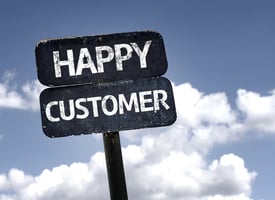Is your gallery looking to upgrade your database / management system? You're probably already...
5 Things to Consider When Choosing a New Gallery Management System
Switching to new gallery management software is a big decision. As you're exploring various management systems, here are some things to keep in mind so that you can make the best choice for your gallery and your team.
1. Get informed about data migration
It's not a surprise that when switching to a new management system, many galleries' biggest concern is maintaining the integrity of their data.
The challenge is that almost every gallery management system exports and imports inventory, contact and invoice data in a different format. For many galleries, it may not even be clear how to get data out of your old system and into a format compatible with the new one.
To make sure your data is accurately and thoroughly migrated, you'll want to ask how data migration works and get a sense of how experienced the team is in handling migrations from your current system.
Experienced migration teams understand the way data is exported from your current system and have a process in place to ensure that it can be accurately and completely migrated into the new system.
The bottom line: Don't let data concerns stop your gallery from upgrading to a newer and more modern management system.
2. Cloud-based software is essential
While many galleries are worried about trusting their business to a cloud-based management system, the reality is that in 2018, the cloud is the best place to keep your data. Storing your gallery's inventory and contact data on local servers is not only outdated, but much less secure.

At ArtCloud, for example, we back up our gallery clients' data four times each and every day on secure, encrypted servers. That means that even if someone managed to access your account and wipe all your data from your management system (which is very unlikely), you would never lose more than 6 hours' worth of work.
The bottom line: It's not 1999 anymore. Storing your data in the cloud is a safety net, and a MUST for galleries operating in 2018 and beyond.
3. Designed for teams
Whether you have one other person at your gallery or a dozen, you'll want to choose a system that makes it easy for everyone to work together and that gives you insight into what your team is doing.
Some tools to look for to help optimize the way your team works:
- Unlimited staff accounts
- Individual staff permissions to control what data each person can view and edit
- The ability to assign contacts to various staff members
- Location and staff-based reporting
- Visibility into what activities each staff member has taken within the system and when
The bottom line: Your next management system should facilitate the way your team works together.
4. More than just inventory management
The best gallery management systems do more than just manage inventory. You spend good money on your management system, and you'll want to be sure it's capable of handling many of your most important workflows and tasks. It'll save you time, money, and keep your gallery running efficiently.
Look for a management system that also has the following capabilities:
- Invoicing and point of sale (POS)
- Client relationship management and sales activity tracking
- Artist payment reports
- Mobile apps so you can work on-the-go
- Responsive, optimized websites that integrate with your inventory data
The bottom line: A comprehensive management system should not only manage your inventory, but also many of your gallery's day-to-day operations.
5. A company committed to your gallery
As you decide which management system to purchase for your gallery, remember that you're not only making a purchase, you're entering into a business relationship -- ideally a long-term one. You want to work with a company that is committed to your gallery's success, now and in the future.
Generally, this means two things:
- Customer-first mentality - look for a company that is committed to its customers and welcomes feedback and suggestions at any time
- Ongoing product development - with as fast as technology changes, you want to work with a company that will keep its management system relevant and ahead of the times
The bottom line: If your management system can't keep up with changing times and customer needs, your gallery won't keep up either.
Learn how ArtCloud works with gallery teams of all sizes to consolidate their marketing, sales and inventory data into one place, so they have more time for other things!






